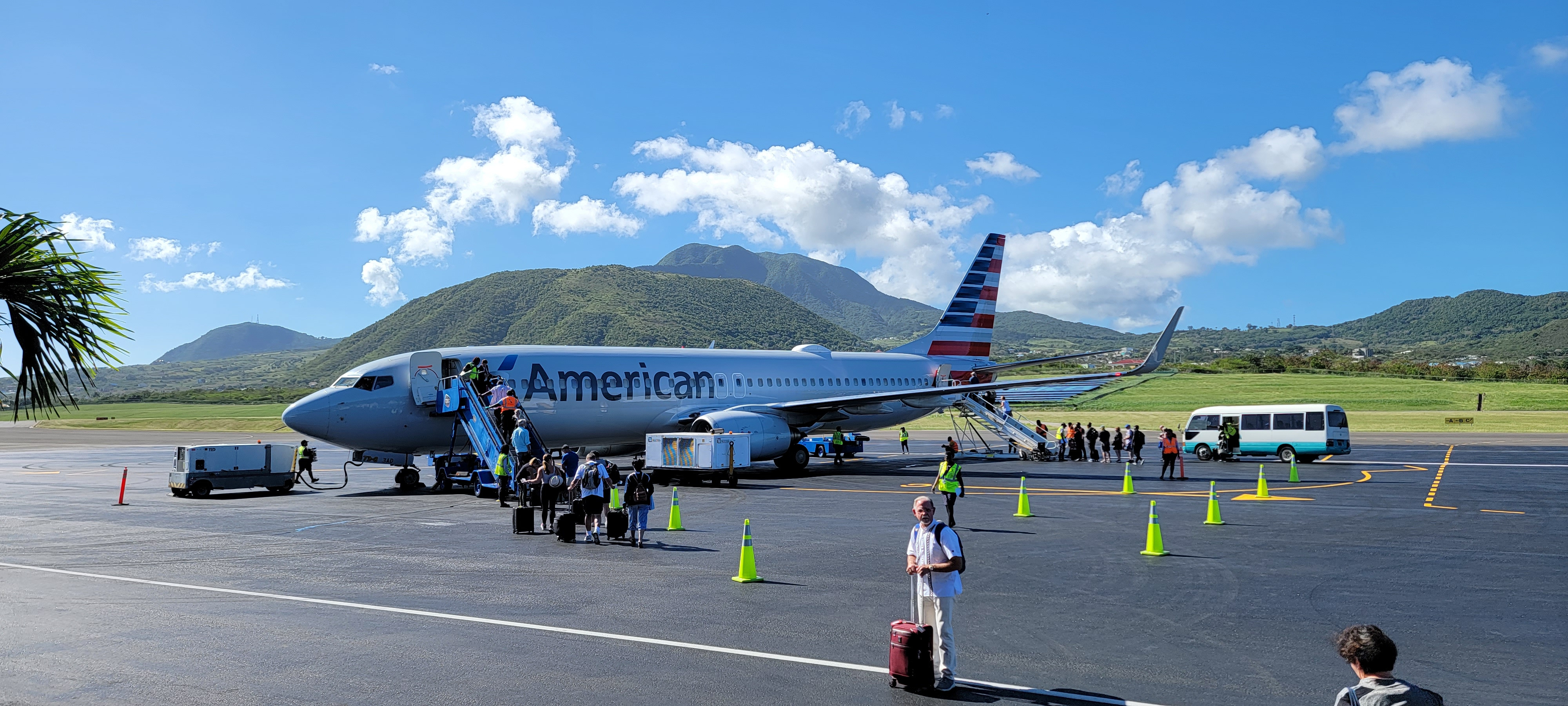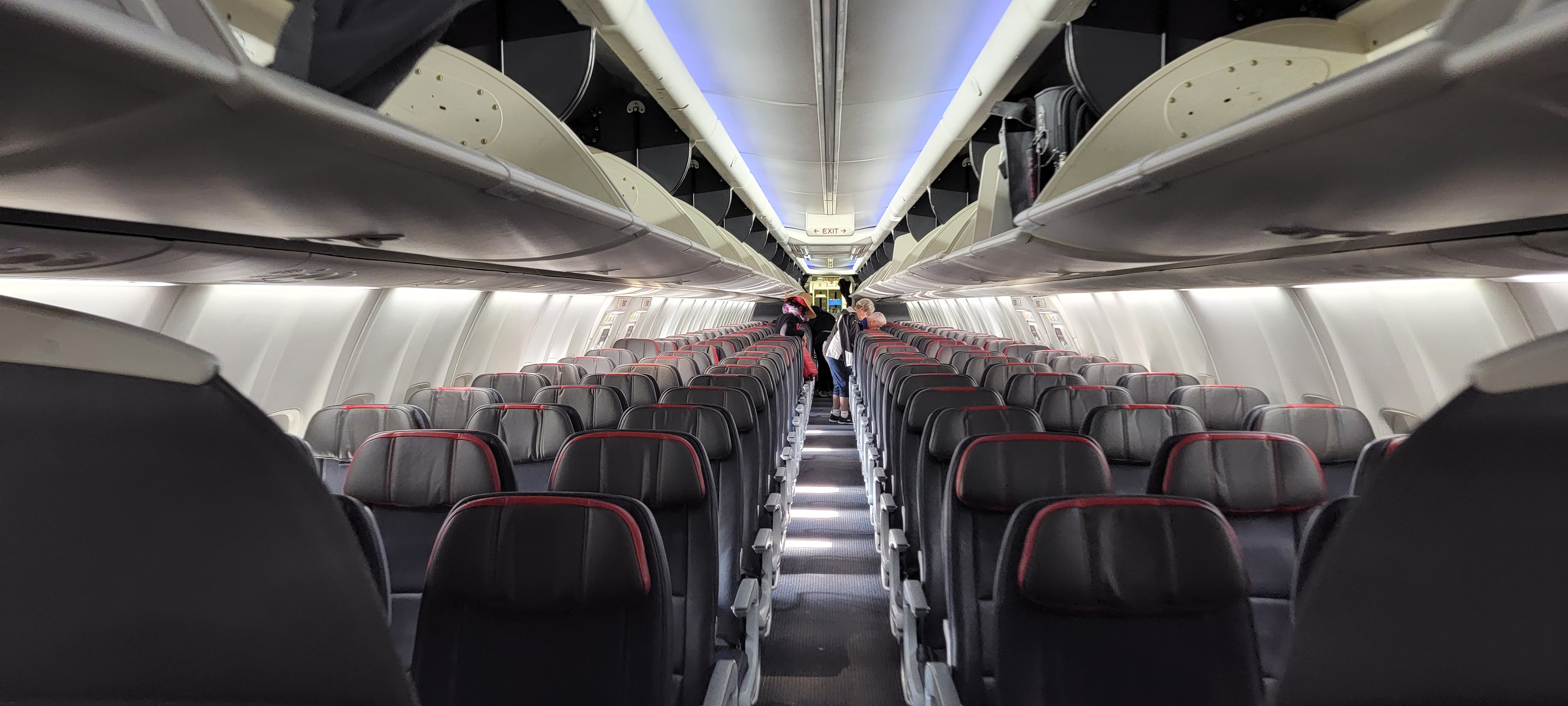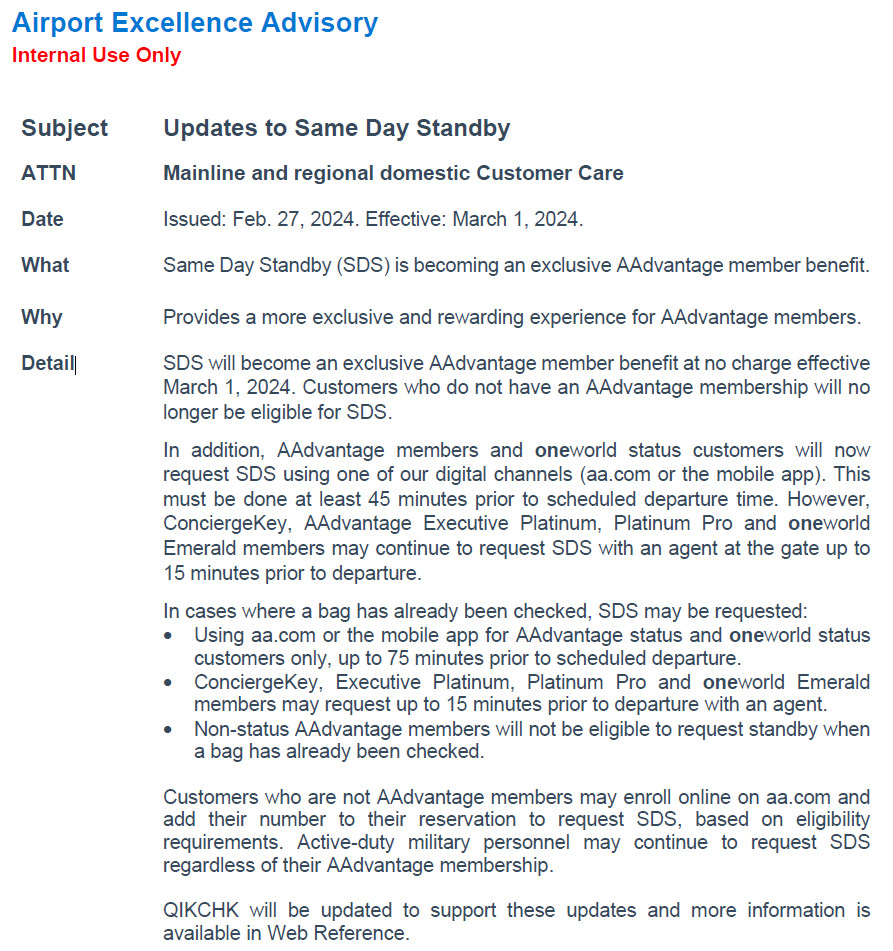For years, the savvy traveler’s trick to getting home earlier was the art of flying standby. Imagine landing ahead of schedule, making a dash to the gate for an earlier flight, and miraculously snagging a seat. This travel victory, especially with American Airlines, is becoming increasingly restricted, impacting many passengers starting March 1, 2024.
Previously, passengers could approach gate agents to request standby on earlier flights, often succeeding if seats were available, especially if they held elite status. This flexibility allowed for spontaneous adjustments to travel plans, a valuable perk for frequent flyers. However, American Airlines has significantly altered this policy, limiting free standby access and changing the request process.

Image alt text: Frustrated traveler at airport gate, denied standby request, illustrating American Airlines’ new standby policy restrictions.
Understanding the New Standby Restrictions
The most significant change is the limitation of free standby eligibility. American Airlines now primarily reserves this benefit for members of their AAdvantage loyalty program, with further restrictions based on elite status tiers. Crucially, requesting standby at the airport gate is no longer an option for most passengers.
Here’s a breakdown of the key changes:
- Limited to AAdvantage Members: Only members of the American Airlines AAdvantage program are eligible for free standby. If you are not enrolled in AAdvantage, you are no longer eligible for standby.
- Elite Status Prioritization: Even within the AAdvantage program, access is tiered. Only Platinum Pro, Executive Platinum, ConciergeKey, and oneworld emerald members retain the ability to request standby at the gate, and even for them, requests can only be made within a 15-minute window before departure.
- Self-Service Requests Required: For most eligible AAdvantage members below Platinum Pro status, standby requests must be made through self-service channels – online or via the American Airlines app – and importantly, at least 45 minutes before departure. This eliminates the possibility of spontaneous, last-minute standby requests at the gate.
- Baggage Restrictions: Non-status AAdvantage members who have checked baggage are ineligible for standby altogether.
These changes mean that the days of simply walking up to the gate agent to hop on an earlier flight are largely over for the majority of American Airlines passengers.
Who is Still Eligible for Standby?
While the new policy significantly restricts standby access, certain passengers remain eligible, albeit with new procedures:
- AAdvantage Elite Members (Platinum Pro and Above): These top-tier elites retain the most flexibility. They can still request standby at the gate, up to 15 minutes before departure. This allows for some last-minute adjustments, but even for them, the window is narrower than before.
- Lower Tier AAdvantage Members (Below Platinum Pro): Members with lower AAdvantage status can request standby, but only via the app or website, and at least 45 minutes prior to departure. This requires more planning and eliminates the chance of gate standby.
It’s important to note that even for eligible members, standby is never guaranteed and is always subject to seat availability.

Image alt text: American Airlines mobile app interface showcasing flight change options, highlighting the self-service standby request method.
How to Request Standby on American Airlines (If Eligible)
The process for requesting standby now depends on your AAdvantage status:
-
For Platinum Pro, Executive Platinum, ConciergeKey, and oneworld Emerald Members:
- You can inquire about standby at the gate agent desk.
- Requests can be made up to 15 minutes before departure.
- Confirm your AAdvantage status with the gate agent.
-
For AAdvantage Members Below Platinum Pro:
- Use the American Airlines website or mobile app.
- Navigate to your upcoming trips and look for standby options.
- Requests must be made at least 45 minutes before departure.
- Follow the prompts to request standby for an earlier flight.
It’s crucial to check the app or website well in advance of your desired earlier flight to see if standby is even an option and to make your request within the 45-minute window.
Why the Policy Change?
American Airlines’ decision to restrict standby access is likely driven by several factors:
- Cost Reduction: Automating standby requests through self-service channels reduces the workload on gate agents, contributing to staffing efficiencies and cost savings.
- Promoting AAdvantage Enrollment: By making standby a benefit primarily for AAdvantage members, American Airlines incentivizes travelers to join their loyalty program. This allows them to gather more customer data for marketing purposes and potentially drive credit card sign-ups.
- Operational Efficiency: Limiting gate standby requests likely streamlines the boarding process and reduces potential delays caused by last-minute changes.
While these changes may improve operational efficiency for the airline, they undoubtedly reduce flexibility and convenience for many passengers, particularly those without elite status or those who value the spontaneity of gate standby.

Image alt text: American Airlines internal memo excerpt detailing standby policy changes, intended for reservation agents, outlining eligibility and procedures.
Conclusion
American Airlines’ updated standby policy marks a significant shift, making it more challenging for most passengers to fly standby. The elimination of gate standby for non-elite members and the introduction of self-service, time-restricted requests reduces flexibility for travelers. While top-tier elites retain some last-minute standby options, the majority of passengers will find it harder to take advantage of earlier flights. Understanding these new rules is crucial for anyone hoping to fly standby on American Airlines and adjust travel expectations accordingly.
